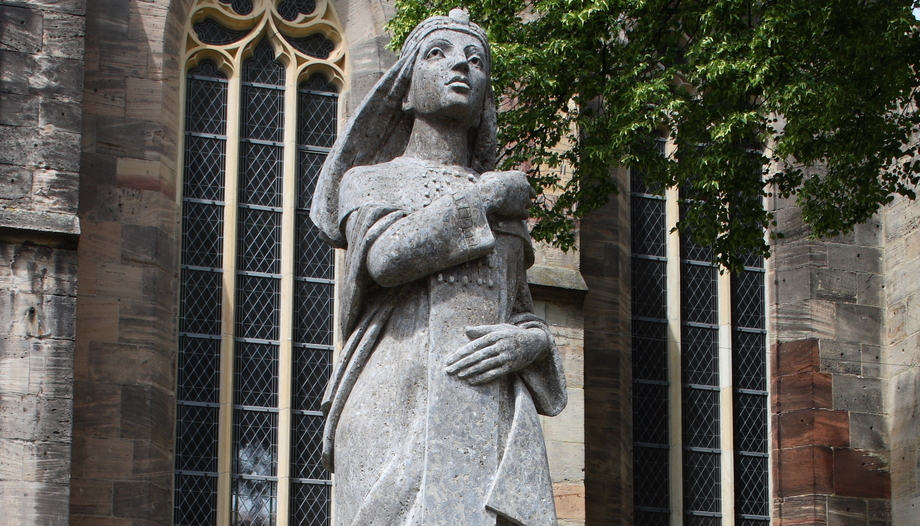Throughout the Middle Ages, women stood out in a male-dominated world and exerted a lasting influence on society and the Church. Significantly, at the dawn of the (Holy) Romano-Germanic Empire, during practically the entire 10th century, four female figures emerged who played a crucial role in the consolidation of the kingdom.
One of them was Theophanes, whom some consider to be the "woman who had the most power in the world. West", she was co-empress of the Romano-Germanic Empire for eleven years as wife of Emperor Otto II, over whom she exercised great influence, and empress for seven years after her husband's death.
Arrival at court
However, his arrival in Germanic lands initially provoked a certain uneasiness among the family of Emperor Otto I. The latter sought a lasting union with the Byzantine Empire, which would raise his prestige as Emperor of the West, through the marriage of his son Otto (II) with a Byzantine princess "purple", allusion to the birth in the palace, as daughter of the Emperor. Otto had already tried twice, sending emissaries to Constantinople; but only when a palace revolt took place that brought John I Tzimiskes to the Constantinopolitan throne, he agreed to the marriage, also because of the common threat to both empires, the Saracens.
Otto I assumed that John I Tzimiskes would send Princess Anna, daughter of the late Emperor Romanos II; however, the new Byzantine emperor sent a great-niece, who did not meet the "purple" requirement.
Sources often note that Otho the Great was pleasantly surprised by the refined education and gifts of this girl of presumably 17, although some sources claim she was only 12. Either for this reason or to avoid damaging relations with Byzantium, Otho agreed to marry his son to Theophan.
Theophane, Empress
Otto (II), who was then 18 years old, and Theophan married before Pope John XIII in St. Peter's Basilica in Rome on April 14, 972. She was even invested as "sharer in the empire". Unlike what used to happen in marriages of convenience, the sources highlight the affectionate relationship between the two.
Despite her youth, Theophanes lived up to her lofty position as empress in the West. She soon accompanied her husband Otto II, who was crowned emperor a year after their marriage, on almost all his travels throughout the empire. She proved to be a diplomatic and politically able advisor to him and exerted considerable influence in politics.
With the emperor he traveled to Italy in 980, where they stayed for three years. Otto II died here in 983, at the age of 29, a victim of malaria. At his side were also his mother, Empress Adelaide, and his sister, Abbess Matilda, as well as Theophan.
Otto II was buried in the crypt of St. Peter's, something exceptional considering that the last emperor buried there was Honorius, in 423. The simple stone sarcophagus stands on eagle's feet and bears the inscription "Otto Secundus Imperator Augustus". The idea of the "translatio" or "renovatio" of the Roman Empire was thus reinforced.
Death in Rome
Empress Theophane assumed, together with her mother-in-law Adelaide and Abbess Mechthild, the regency of her youngest son Otto for eight years. Although the sources are scarce and allow for various interpretations, it seems that Theophan succeeded in removing both Adelaide and Mechthild from the regency, making her the only German empress to rule temporarily alone during her son's minority.
Not only did he manage to prevail over rebellious nobles and a large Slavic uprising, but he also paved the way for the coronation of his son as "Imperator Augustus". Shortly after returning from Rome she died in Nijmegen in June 991, at the age of about 31. At her request, she was buried in the abbey church of St. Pantaleon in Cologne, which she had generously endowed, and where her monumental tomb is located today.








